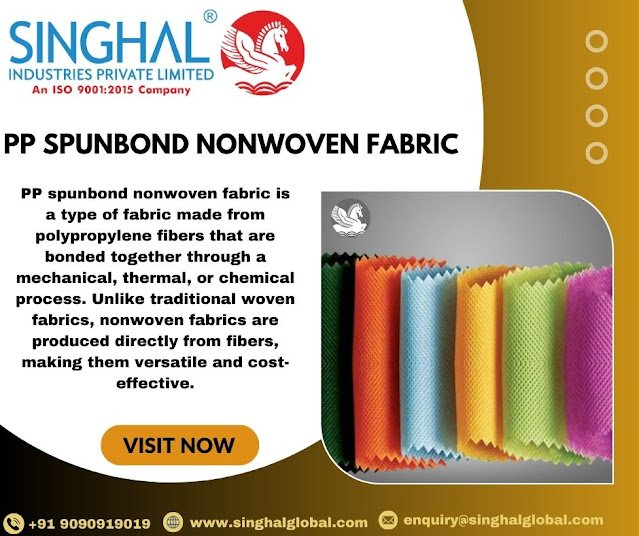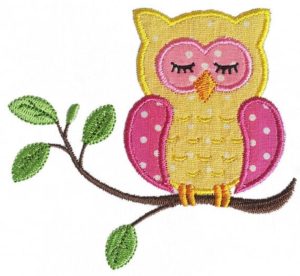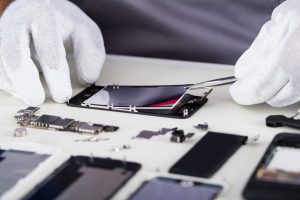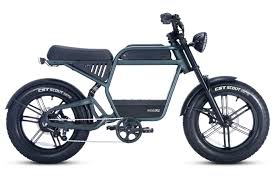PPSpunbond Nonwoven Fabric: Properties, Uses, and Advantages

Polypropylene Spunbond Nonwoven Fabric, often referred to as PP non woven fabric or PP spunbond, is a versatile material widely used across various industries due to its unique properties and advantages. This article delves into its characteristics, diverse applications, significant benefits, and impact on single industries.
Introduction to PP Spunbond Nonwoven Fabric
What is PP Spunbond Nonwoven Fabric?
PP spunbond nonwoven fabric is a type of nonwoven fabric made from polypropylene fibers. These fibers are spun and then bonded together using heat, chemicals, or mechanical processes, rather than being woven together. The resulting fabric has a random arrangement of fibers that are interconnected, providing strength and durability.
How is PP Spunbond Nonwoven Fabric Manufactured?
The manufacturing process of PP spunbond nonwoven fabric begins with the extrusion of polypropylene pellets into fine fibers. These fibers are then spun onto a conveyor belt in a web formation. The next step involves bonding the fibers together to create a cohesive fabric using methods such as thermal bonding or chemical bonding.
Key Properties of PP Spunbond Nonwoven Fabric
PP spunbond nonwoven fabric is known for several key properties:
- Lightweight: It is lightweight and easy to handle, making it suitable for applications where weight is a concern.
- Breathability: The fabric allows air and moisture vapor to pass through, enhancing comfort in applications such as hygiene products and medical textiles.
- Strength: Despite its lightweight nature, PP spunbond nonwoven fabric exhibits good tensile strength, making it durable for various uses.
- Chemical Resistance: It resists many chemicals, making it suitable for industrial applications where exposure to chemicals is common.
- Water Repellency: Depending on the treatment, PP spunbond nonwoven fabric can be made water-resistant or waterproof, adding to its versatility.
Uses of PP Spunbond Nonwoven Fabric
Applications in Agriculture
PP spunbond nonwoven fabric plays a crucial role in agriculture:
- Crop Protection: It is used as a covering material to protect crops from pests, insects, and adverse weather conditions.
- Weed Control: The fabric helps in suppressing weed growth while allowing water and nutrients to penetrate the soil.
- Nursery and Gardening: Used for seedling protection and enhancing seedling growth in nurseries and gardening applications.
Role in Medical Textiles
In the medical field, PP spunbond nonwoven fabric is indispensable:
- Hygiene Products: Used in the manufacturing of diapers, sanitary napkins, and wipes due to its soft texture and absorbent properties.
- Medical Supplies: It is used in surgical gowns, masks, caps, and drapes to provide a sterile barrier and prevent cross-contamination.
- Wound Dressings: The fabric is also utilized in wound care products for its non-irritating and breathable qualities.
Automotive Industry Applications
In the automotive sector, PP spunbond nonwoven fabric finds extensive use:
- Interior Components: Used for carpet backing, door panels, and headliners to enhance acoustic insulation and comfort inside vehicles.
- Upholstery: It serves as a backing material for upholstery fabrics, improving durability and comfort for seating applications.
- Filtration Systems: Used in cabin air filters and engine air filtration systems due to its filtration efficiency and ability to withstand high temperatures.
Advantages of PP Spunbond Nonwoven Fabric
PP spunbond nonwoven fabric is favored for its lightweight nature, which reduces transportation costs and makes handling easier during manufacturing and installation. The fabric’s breathable properties ensure comfort in applications where it comes into contact with the skin, such as hygiene products and medical textiles. PP spunbond nonwoven fabric is recyclable and can be reused in various applications, contributing to sustainability efforts in industries looking for eco-friendly solutions.
Comparative Analysis with Other Nonwoven Fabrics
While both PP and polyester spunbond fabrics offer similar functionalities, PP spunbond is often preferred for its superior breathability and moisture management capabilities. SMS (Spunbond-Meltblown-Spunbond) fabric combines layers of spunbond and meltblown nonwovens. PP spunbond provides structural integrity, while the meltblown layers offer enhanced filtration properties, making SMS fabric versatile in medical and industrial applications.
Production Process of PP Spunbond Nonwoven Fabric
The process starts with the extrusion of polypropylene pellets, which are melted and extruded into fine filaments. These filaments are then spun and laid down in a random orientation on a conveyor belt. The fibers are bonded together using either thermal bonding (heat) or chemical bonding (adhesives), depending on the desired properties of the final fabric.
Environmental Impact and Sustainability
PP spunbond nonwoven fabric is recognized for its environmental advantages: The fabric can be recycled multiple times without compromising its properties, reducing waste and supporting circular economy principles. Certain formulations of PP spunbond nonwoven fabric are designed to be biodegradable under specific conditions, offering a sustainable end-of-life solution. Manufacturers adhere to strict quality standards and certifications to ensure the performance and safety of PP spunbond nonwoven fabrics in diverse applications, including medical and hygiene sectors.
Innovation in PP Spunbond Nonwoven Technology
Recent innovations in PP Spunbond Non Woven Fabric technology include: Improvements in microfiber production techniques have resulted in fabrics with enhanced strength, durability, and softness, expanding their application scope. The integration of nanotechnology has led to the development of PP spunbond fabrics with improved barrier properties and enhanced functionality for specialized applications.
Future Trends in PP Spunbond Nonwoven Fabric
The market for PP spunbond nonwoven fabric is poised for growth Increasing industrialization and urbanization in emerging economies are driving demand for cost-effective and sustainable nonwoven fabrics like PP spunbond. Ongoing research and development efforts focus on enhancing the performance, sustainability, and application versatility of PP spunbond nonwoven fabrics, ensuring they meet evolving market demands.
Challenges and Limitations
While PP spunbond nonwoven fabric offers good durability, extreme environmental conditions can pose challenges, requiring continuous improvement in material resilience. Managing production costs while maintaining high-quality standards remains a challenge for manufacturers, influencing market dynamics and pricing strategies.
Conclusion
In conclusion, PP Non Woven Fabric stands out as a versatile material with diverse applications across agriculture, medical textiles, automotive industries, and more. Its lightweight nature, breathability, strength, and eco-friendly characteristics make it a preferred choice in various sectors. With ongoing technological advancements and increasing demand from emerging markets, the future looks promising for PP spunbond nonwoven fabric.
FAQs
1. What is polypropylene spunbond nonwoven fabric?
Polypropylene spunbond nonwoven fabric is a type of fabric made from polypropylene fibers that are bonded together without weaving, offering unique properties suitable for diverse applications.
2. What are the uses of PP non woven fabric?
PP non woven fabric is used in agriculture for crop protection, in medical textiles for surgical gowns and masks, and in automotive industries for interior components and filtration systems.
3. How is PP spunbond non woven fabric advantageous in single industries?
In single industries like agriculture, medical textiles, and automotive sectors, PP spunbond non woven fabric provides lightweight, breathable, and cost-effective solutions.
4. What are the advantages of PP spunbond non woven fabric over traditional woven fabrics?
Compared to traditional woven fabrics, PP spunbond non woven fabric offers superior breathability, comfort, and recyclability, making it a sustainable choice for various applications.
5. How does PP spunbond non woven fabric contribute to environmental sustainability?
PP spunbond non woven fabric is recyclable and, in some formulations, biodegradable, reducing environmental impact and promoting sustainable practices in manufacturing.





